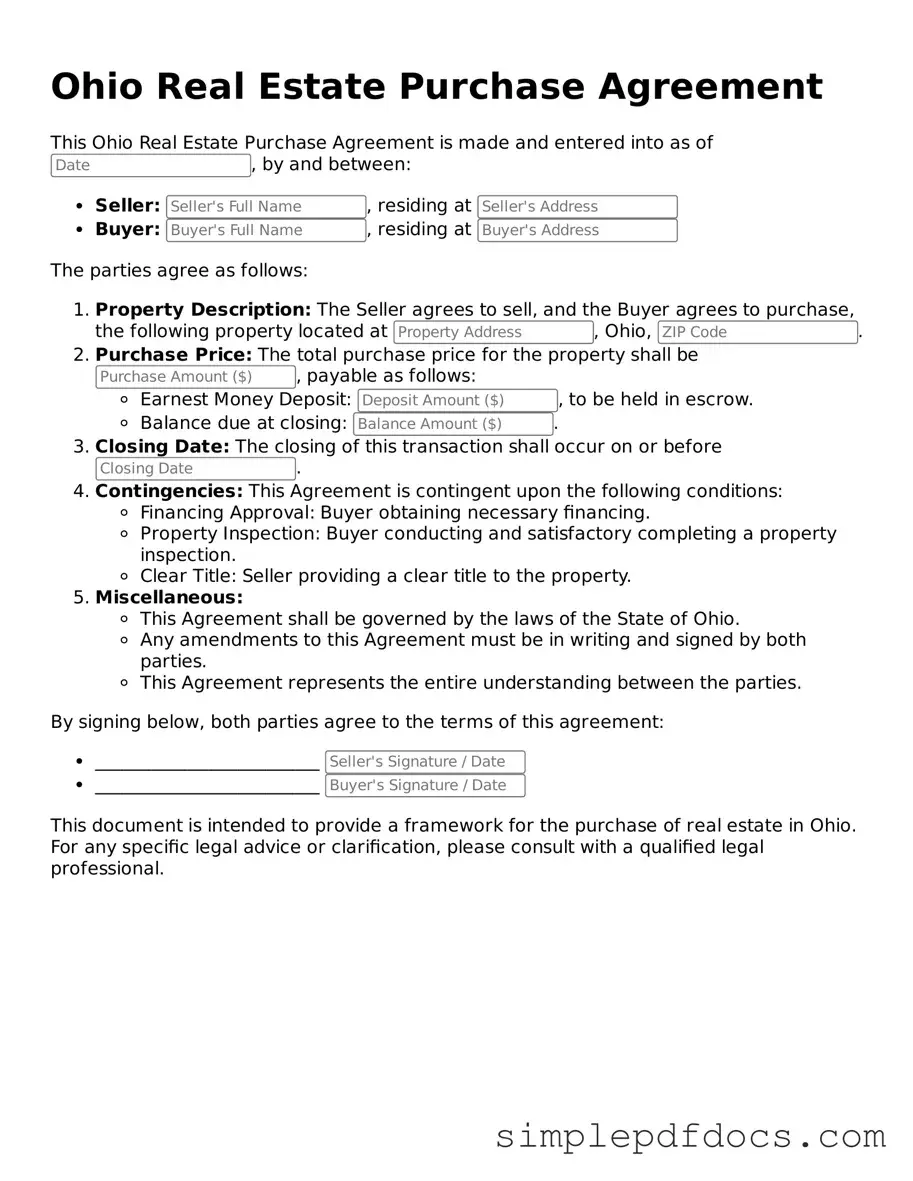When navigating the world of real estate transactions in Ohio, understanding the Ohio Real Estate Purchase Agreement form is essential for both buyers and sellers. This document serves as a foundational contract that outlines the terms and conditions of a property sale. It includes critical components such as the purchase price, financing details, and the closing date, ensuring that all parties are on the same page regarding the transaction. Additionally, the agreement specifies any contingencies, such as inspections or financing approvals, which protect the interests of both the buyer and the seller. The form also addresses the responsibilities of each party, including the allocation of closing costs and the transfer of property title. By clearly detailing these aspects, the Ohio Real Estate Purchase Agreement helps to facilitate a smoother transaction process, reducing the potential for misunderstandings and disputes. Familiarity with this form not only empowers individuals in their real estate dealings but also fosters a more transparent and efficient market overall.
